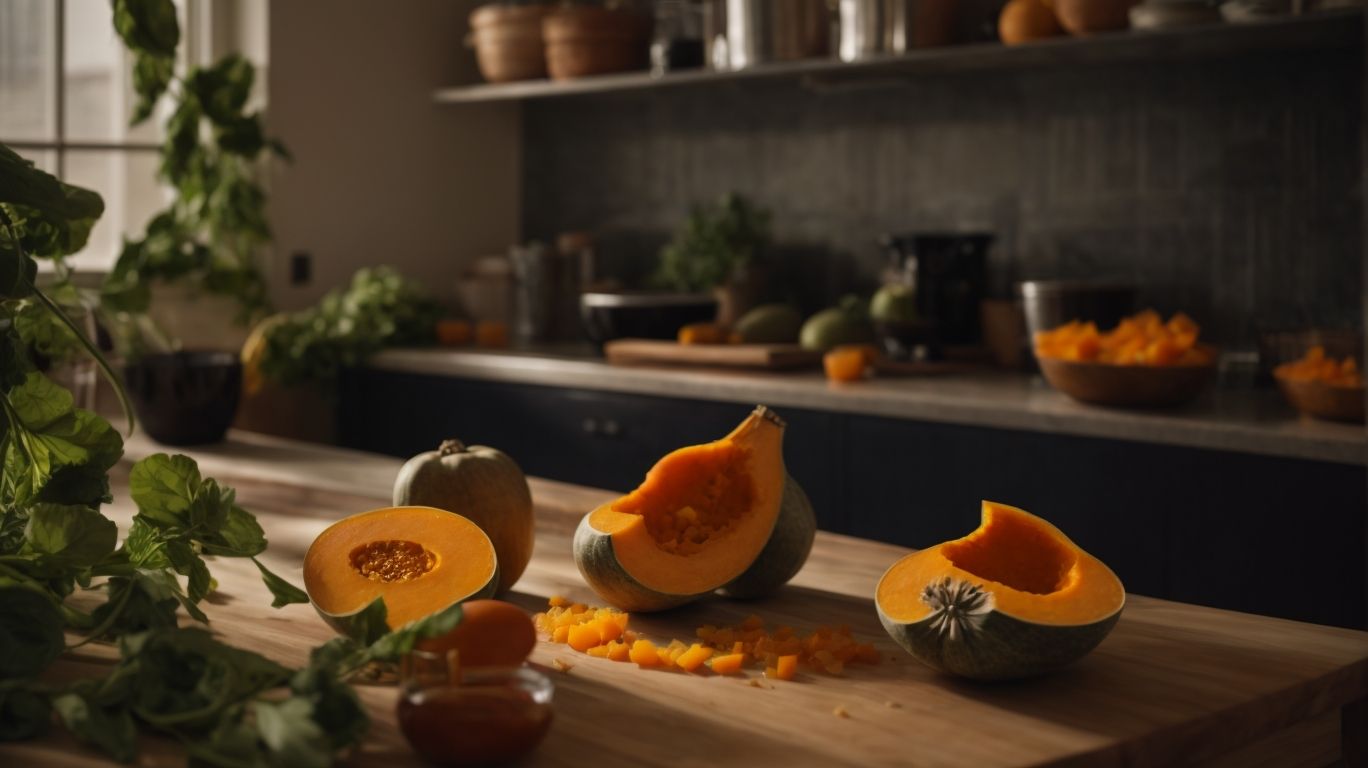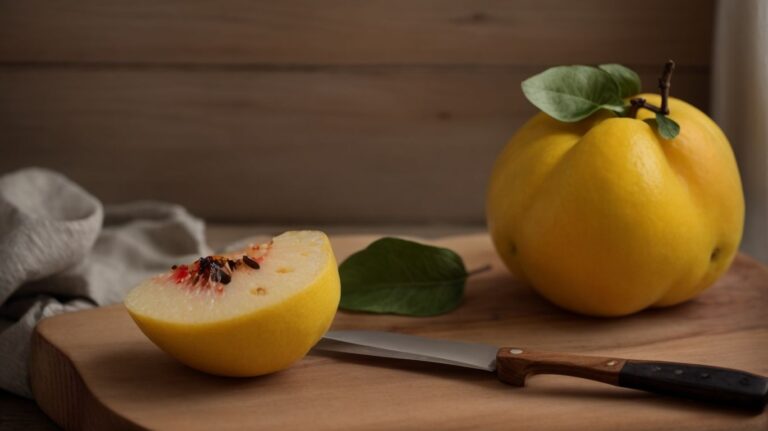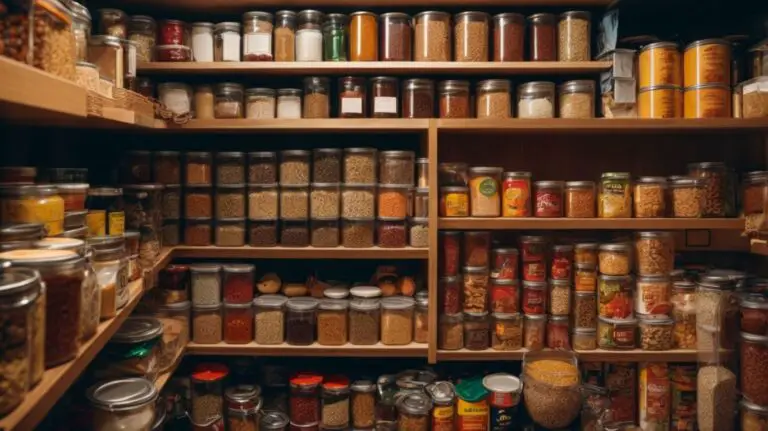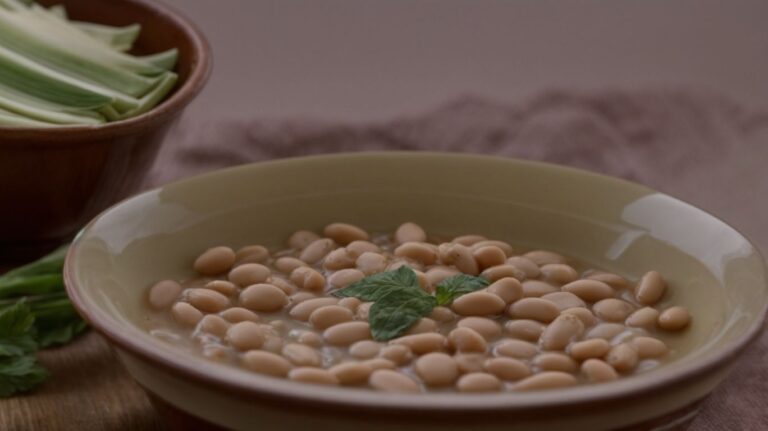How to Cook Butternut Squash?
Are you looking to add a delicious and nutritious twist to your meals? Butternut squash is a versatile and flavorful ingredient that can elevate any dish.
In this article, we will explore everything you need to know about butternut squash, from where to buy it to how to prepare it for cooking.
We will also discuss different methods for cooking butternut squash, as well as share some mouthwatering recipes that will surely impress your friends and family.
Let’s get cooking with butternut squash!
Key Takeaways:
What is Butternut Squash?
Butternut squash is a popular winter squash known for its sweet, nutty flavor and vibrant orange color.
Its creamy texture and slightly sweet taste make it a versatile ingredient in both savory and sweet dishes. When roasted, butternut squash develops a caramelized flavor that enhances many recipes, from soups and salads to casseroles and pasta dishes. Its shape, similar to a large pear with a bulbous end and a long neck, adds an aesthetic appeal to any dish it is used in.
Rich in vitamin A and fiber, butternut squash offers numerous health benefits, supporting eye health and digestion. This nutritious vegetable can be pureed into soups, mashed as a side dish, or even spiralized to create low-carb noodles. With its ability to be incorporated into various cuisines, from Italian to Asian, butternut squash continues to be a favorite ingredient for many chefs and home cooks alike.
Where Can You Buy Butternut Squash?
Butternut squash is commonly available in grocery stores, farmers’ markets, and specialty produce shops, especially during the fall and winter seasons.
Consumers can find butternut squash in the produce section of most grocery stores, alongside other winter squashes such as acorn and spaghetti squash. Farmers’ markets are excellent places to source locally grown and often organic butternut squash, providing a fresher and more sustainable option. Specialty produce shops may offer a wider variety of squashes, including heirloom and exotic types that can add unique flavors to dishes.
When selecting butternut squash at the store or market, prioritize squashes that feel heavy for their size, with firm, unblemished skin. Avoid squashes with soft spots or signs of mold. The skin should be a uniform beige or tan color without any green patches, indicating ripeness. Opt for squash with a thick neck and small seed cavity, as these tend to contain more flesh and fewer seeds, making them more flavorful. Stocking up on butternut squash during peak season in the fall and winter allows consumers to enjoy this versatile vegetable in a variety of dishes, from soups and stews to roasted sides and even desserts.
Preparing Butternut Squash for Cooking
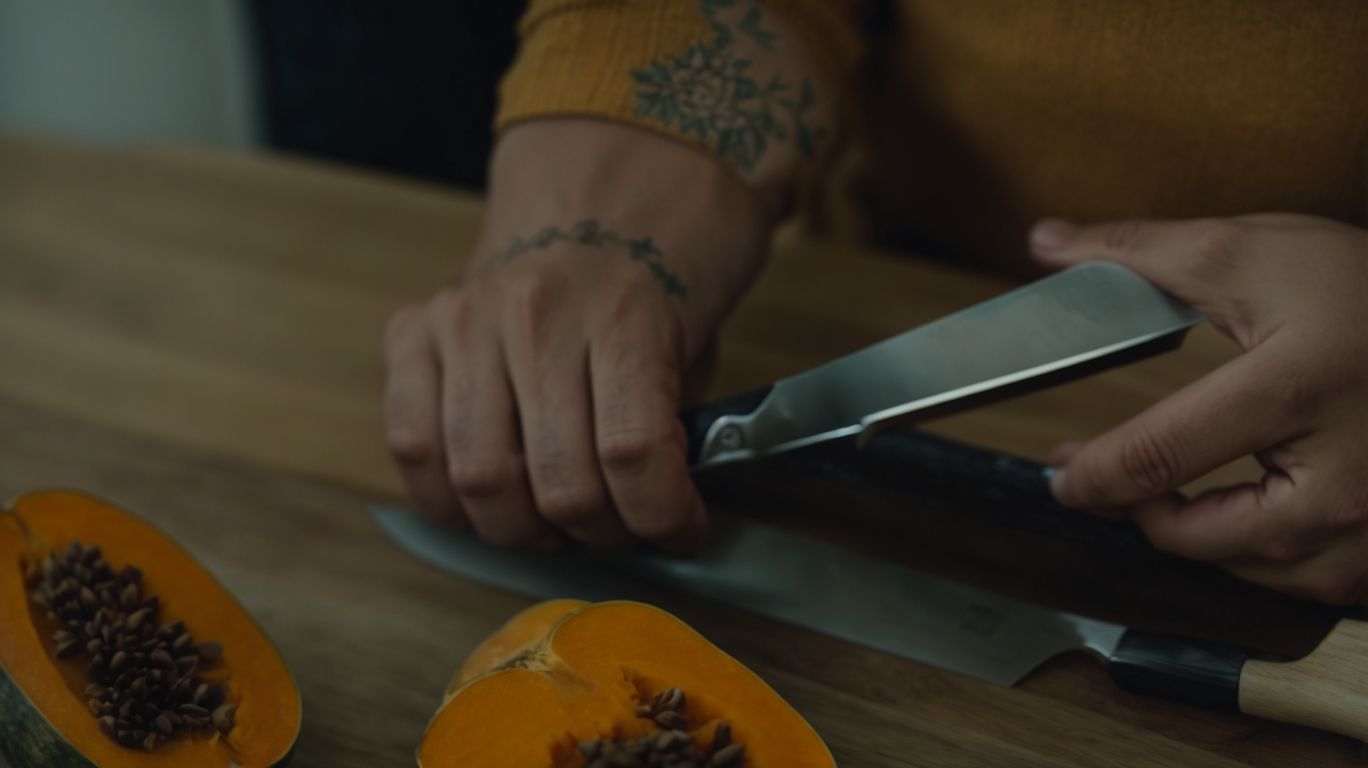
Credits: Poormet.Com – Billy Smith
Preparing butternut squash for cooking involves selecting the right squash, cutting and peeling it, and removing the seeds to create delicious dishes packed with nutrients and flavors.
First, choose a butternut squash that feels heavy for its size, indicating ripeness. Wash the exterior to remove any dirt or debris. Using a sharp knife, carefully cut off both ends of the squash to create stable bases. Stand the squash upright and peel the skin with a vegetable peeler or a sharp knife. Once peeled, slice the squash in half lengthwise and scoop out the seeds and fibers with a spoon. You can then proceed to cube, dice, or roast the squash according to your recipe.
How to Select the Right Butternut Squash?
Selecting the right butternut squash is essential for ensuring a flavorful and satisfying dish.
When choosing butternut squash, size plays a crucial role. Look for squash that feels heavy for its size as this indicates it is packed with moisture and flavor. Additionally, firmness is another key factor. The squash should be firm to the touch without any soft spots or bruises. Checking the color is also important; a deep tan or beige skin typically signifies ripeness. To ensure you pick the best squash, avoid those with blemishes or cuts, which could indicate poor quality.
How to Cut and Peel Butternut Squash?
Cutting and peeling butternut squash can be simplified with the right techniques and tools.
One of the most efficient ways to start is by gently cutting off both ends of the squash to create stable bases for further cutting. Next, use a sharp vegetable peeler to carefully peel the tough skin of the squash, revealing the vibrant orange flesh beneath.
In terms of cutting the squash, ensure stability by placing it flat on a cutting board and using a sharp knife to carefully slice it lengthwise. Scoop out the seeds with a spoon or melon baller, then proceed to cut the flesh into cubes, slices, or any desired shape.
Using a strong kitchen knife and a sturdy cutting board is crucial for safety and efficiency during the process. Remember to take caution while handling sharp objects and always work on a stable surface to prevent accidents while preparing this versatile vegetable.
How to Remove the Seeds from Butternut Squash?
Removing the seeds from butternut squash is a crucial step to ensure a smooth and enjoyable cooking experience.
One effective way to extract the seeds from a butternut squash is by cutting the squash in half lengthwise. Next, you can use a spoon to scoop out the seeds and pulp from each half. Another method involves using a grapefruit spoon, which has serrated edges that can make the task easier.
Once you’ve removed the seeds, don’t discard them! Squash seeds are not only edible but also a nutritious snack when roasted. Simply rinse the seeds, toss them with a bit of olive oil and seasoning, then roast them in the oven until they’re crispy and golden.
Methods for Cooking Butternut Squash
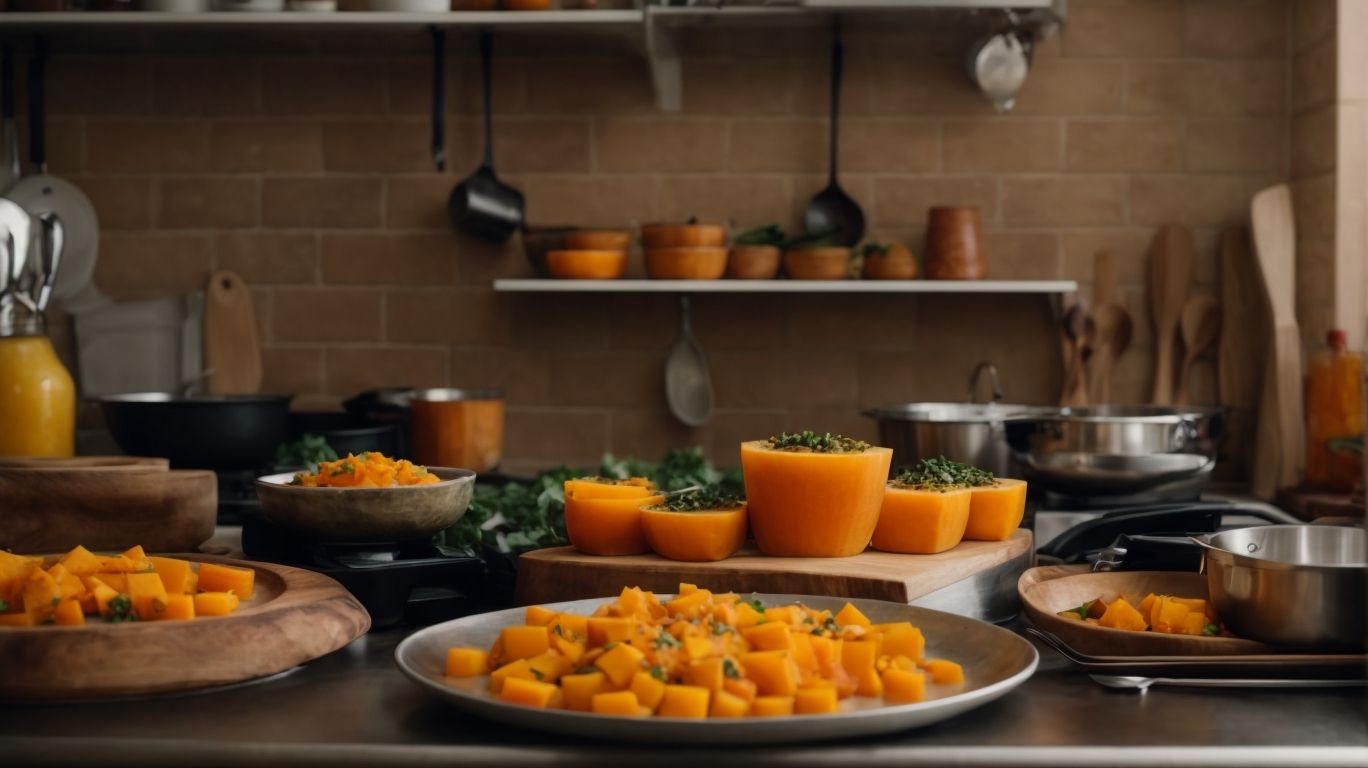
Credits: Poormet.Com – Philip Carter
Cooking butternut squash can be accomplished through various methods, each offering unique flavors and textures to elevate your dishes.
One popular way to cook butternut squash is by roasting. To do this, simply preheat your oven to 400°F (200°C), peel and dice the squash, toss it in olive oil, salt, and pepper, then spread it out on a baking sheet. Roast for about 25-30 minutes until tender and caramelized, enhancing its natural sweetness.
Boiling is another method that works well for soups and purees. Simply peel and cube the squash, then boil in a pot of water until soft. This method retains the squash’s natural flavor and is great for incorporating into other dishes.
Roasting Butternut Squash
Roasting butternut squash enhances its natural sweetness and yields a caramelized, tender texture that is perfect for side dishes or standalone meals.
When preparing roasted butternut squash, start by preheating your oven to 400°F (200°C). To bring out the squash’s flavor, you can season it with a combination of olive oil, salt, pepper, and herbs like thyme or rosemary. Cube the squash into uniform pieces to ensure even cooking. Spread the cubes on a baking sheet in a single layer, allowing them enough space to roast properly.
- Roast for about 25-30 minutes, tossing halfway through, until the squash is golden and fork-tender.
- You can also experiment with different seasonings like cinnamon, nutmeg, or a sprinkle of parmesan cheese for a unique flavor profile.
Once roasted, you can use the butternut squash in various ways. For a hearty salad, toss the roasted squash with mixed greens, cranberries, and a balsamic vinaigrette. Alternatively, incorporate it into a creamy butternut squash soup seasoned with sage and nutmeg. You can also add roasted squash to pasta dishes or as a topping for pizzas, providing a sweet and savory contrast to your recipes.
Boiling Butternut Squash
Boiling butternut squash is a quick and simple method to soften the squash for soups, purees, or mashes.
When boiling butternut squash, it is important to remember not to overcook it, as this can cause the squash to become mushy and lose its distinct flavor. To achieve the ideal texture, aim to boil the squash for approximately 10-15 minutes, depending on the size of the pieces. Quick tip: To test if the squash is ready, use a fork to pierce it; it should be tender but still slightly firm.
To retain as many nutrients as possible during boiling, consider using the cooking water in recipes like soups or stews, as it may contain some of the squash’s vitamins and minerals. Adding a pinch of salt to the boiling water can enhance the flavor of the squash without masking its natural taste.
Steaming Butternut Squash
Steaming butternut squash preserves its natural flavor and nutrients while maintaining a tender and slightly firm texture.
Steaming is considered one of the healthiest cooking methods as it doesn’t involve submerging the vegetable in water, which can lead to nutrient loss. By cooking the butternut squash with steam, you ensure that the essential vitamins and minerals, including vitamin A, vitamin C, and potassium, are retained in the vegetable. This gentle cooking process also helps in enhancing the squash’s sweet and nutty flavors, making it a delicious and nutritious addition to your meals.
Grilling Butternut Squash
Grilling butternut squash imparts a smoky flavor and charred edges, adding depth to salads, sandwiches, or as a standalone side dish.
When preparing butternut squash for grilling, it’s essential to cut it into uniform slices or cubes to ensure even cooking. Drizzle the squash with a touch of olive oil and sprinkle with salt and pepper for a simple seasoning. You can also experiment with herbs like rosemary or thyme for added fragrance and flavor.
Depending on the thickness of the squash pieces, they usually need around 10-15 minutes on the grill, turning them halfway through for those gorgeous grill marks. Pairing grilled butternut squash with balsamic glaze and crumbled feta cheese elevates its taste profile with tangy and creamy elements.
Microwaving Butternut Squash
Microwaving butternut squash is a convenient and time-saving method to cook this vegetable for quick meals or snacks.
To effectively microwave butternut squash, start by washing the squash thoroughly and piercing it in a few places with a fork to prevent steam build-up. Next, cut the squash into smaller pieces or chunks to ensure even cooking. Place the pieces in a microwave-safe dish, add a bit of water to create steam, cover with a microwave-safe lid, and microwave on high for about 6-8 minutes, checking periodically to avoid overcooking. Once the squash is tender, allow it to cool before scooping out the flesh for use in various dishes.
Delicious Recipes Using Butternut Squash
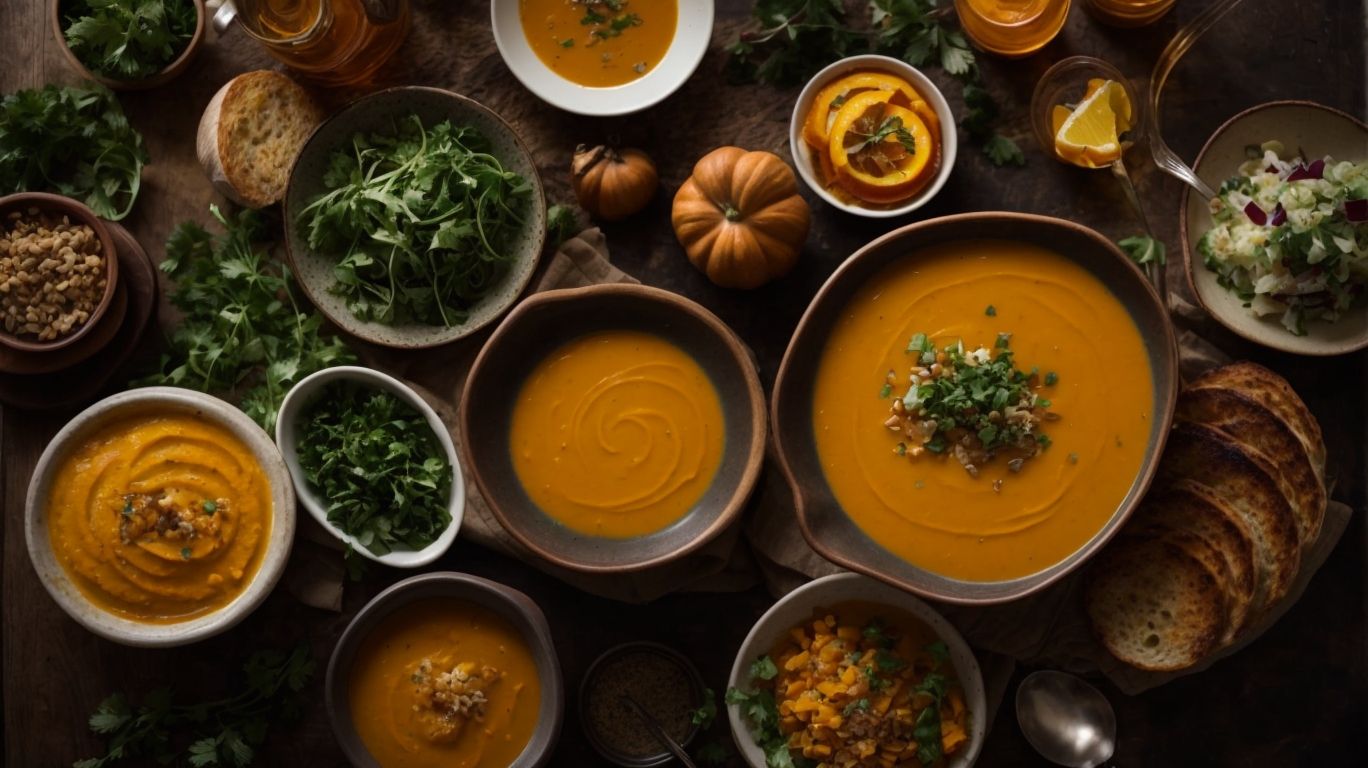
Credits: Poormet.Com – Jose Roberts
Explore a variety of delectable recipes that showcase the versatility and deliciousness of butternut squash in culinary creations.
Butternut squash is a versatile ingredient that shines in soups, roasted dishes, salads and more.
- A creamy butternut squash soup, enriched with herbs and a dash of cream, offers a comforting and velvety texture.
- For a vibrant salad, try combining roasted butternut squash with arugula, goat cheese, and balsamic glaze for a delightful sweet-savory contrast.
- In pasta dishes, roasted butternut squash pairs beautifully with sage, parmesan, and a drizzle of brown butter for a rich and satisfying meal.
Butternut Squash Soup
Butternut squash soup is a comforting and nutritious dish that highlights the natural sweetness and velvety texture of this versatile vegetable.
Making this delicious soup at home is easier than you might think. To start, gather your ingredients: butternut squash, vegetable broth, onions, garlic, and a dash of nutmeg. Begin by roasting the squash until it’s soft and caramelized, then sauté the onions and garlic until fragrant. Add the roasted squash and broth, simmer until everything is tender, then blend until smooth for that creamy consistency.
One of butternut squash’s greatest benefits is its rich source of vitamins A and C, which support a healthy immune system and glowing skin. Its high fiber content aids digestion and promotes a feeling of fullness, making it a great option for a wholesome meal.
Butternut Squash Risotto
Butternut squash risotto is a creamy and indulgent dish that combines the nutty flavors of squash with the rich creaminess of Arborio rice.
To create this luxurious dish, you start by sautéing finely chopped onions in olive oil until they become translucent, adding a touch of garlic for extra depth of flavor. The essential step in making a velvety risotto is gradually adding hot vegetable broth to the Arborio rice, stirring continuously until the liquid is absorbed, and the rice reaches a perfect al dente consistency.
When the rice is almost cooked, it’s time to fold in the roasted butternut squash, which has been caramelized to bring out its natural sweetness and enhance the dish’s overall complexity. Season generously with salt, pepper, and a hint of nutmeg to elevate the savory profile of the risotto.
Butternut Squash and Sage Pasta
Butternut squash and sage pasta is a delightful combination of roasted squash, aromatic herbs, and al dente pasta, creating a comforting and flavorful meal.
This dish offers a perfect balance of sweetness from the caramelized squash and earthiness from the sage, making it a great option for a cozy dinner.
To begin, select a sturdy pasta like rigatoni or pappardelle to hold up well against the robust flavors of the dish. When making the sauce, infuse butter with fresh sage leaves for a fragrant base that enhances the overall taste.
Roasted Butternut Squash Salad
Roasted butternut squash salad offers a delightful blend of textures and flavors, combining caramelized squash with fresh greens and zesty dressings.
One of the key elements in creating a successful roasted butternut squash salad is achieving that perfect balance between sweet and savory notes. The caramelization of the squash brings out its natural sweetness, while the addition of tangy dressings like a balsamic vinaigrette or a citrusy herb dressing adds a refreshing contrast.
For those looking to add more depth to their salad, incorporating crunchy elements like toasted nuts or seeds can provide a satisfying textural contrast to the softness of the squash and greens. Tossing in some crumbled goat cheese or feta can introduce a creamy richness that complements the other flavors.
When serving this salad, consider presenting it on a bed of peppery arugula or mixed baby greens to enhance the visual appeal and add a peppery bite to each forkful. Another option is to sprinkle some pomegranate arils or dried cranberries for bursts of sweetness that further elevate the dish.
Frequently Asked Questions
1. What is the best way to cook butternut squash?
The best way to cook butternut squash is to roast it in the oven. This method brings out the natural sweetness of the squash and creates a crispy exterior.
2. How do I prepare butternut squash for cooking?
To prepare a butternut squash for cooking, start by peeling off the skin with a vegetable peeler. Then, cut the squash in half lengthwise and scoop out the seeds. Finally, chop the squash into desired sized pieces.
3. Can I cook butternut squash in the microwave?
Yes, you can cook butternut squash in the microwave. Simply place the squash in a microwave-safe dish with a small amount of water, cover it with a lid or plastic wrap, and microwave on high for 10-12 minutes or until tender.
4. What are some other ways to cook butternut squash?
In addition to roasting and microwaving, you can also cook butternut squash by steaming, sautéing, or boiling it. Each method will result in a slightly different texture and flavor, so feel free to experiment and find your favorite.
5. How do I know when butternut squash is fully cooked?
You can tell when butternut squash is fully cooked by piercing it with a fork or knife. If it goes in easily and the squash is tender, then it is ready to eat.
6. Can I freeze cooked butternut squash?
Yes, you can freeze cooked butternut squash for later use. Allow it to cool completely before placing it in an airtight container or freezer bag. It will keep in the freezer for up to 3 months. Thaw in the refrigerator before reheating.

